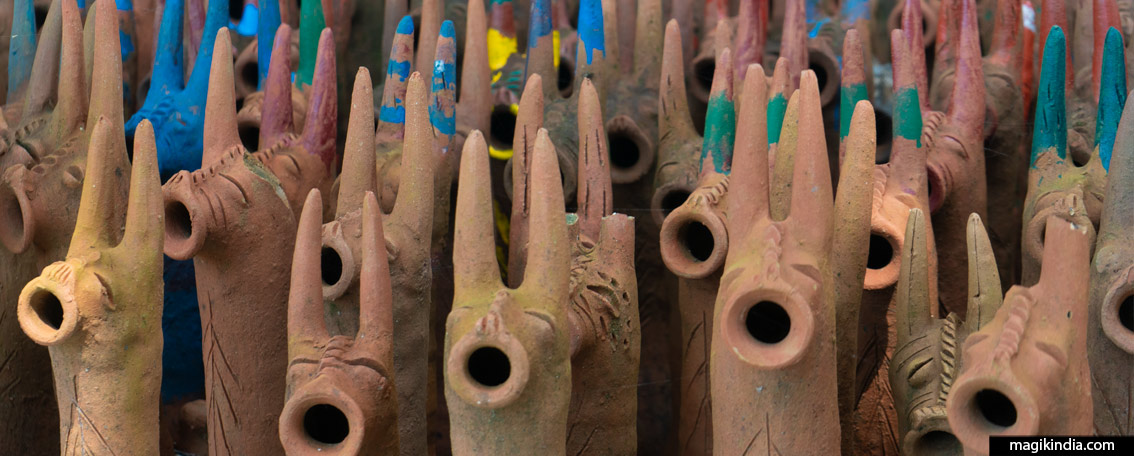
Poshina and the enigmatic terracotta horses
If you pass by Udaipur, Rajasthan, you may like to make a short detour to Poshina, you will not regret it! The winding road that leads you to this authentic village of Gujarat crosses the Aravallis mountains, particularly enchanting after the monsoon, when the lush nature offers a colour palette of intense and fresh greens. What a delight! But there are more surprises to come. On arrival, you are greeted by the descendants of the Maharajas in the ancient palace of Darbargadh, which will be your charming dwelling during the time of your visit to the region. The rest of the story is a series of beautiful discoveries, from the intriguing adivasis terracotta horses to the colorful Garasia peoples, not to mention the very elegant Rabaris shepherds with large vermilion turbans.

Poshina is located in the district of Sabarkantha, in the far north of Gujarat and about twenty kilometers from Ambaji, a major pilgrimage site and supreme home of the Shakti.
The region nestles quietly in the Aravallis mountains, whose hilly and wild landscapes delight you throughout your journey. On the road, as a foretaste of our stay in Poshina, we meet several natives, including Bhils, one of the most numerous indigenous peoples of India. The “chai” breaks allow us to meet them by stammering out a few words in Hindi. Around the tea stand, several locals are waiting for the bus or rather the “taxi-jeeps”, which seem to circulate only when they are overcrowded!
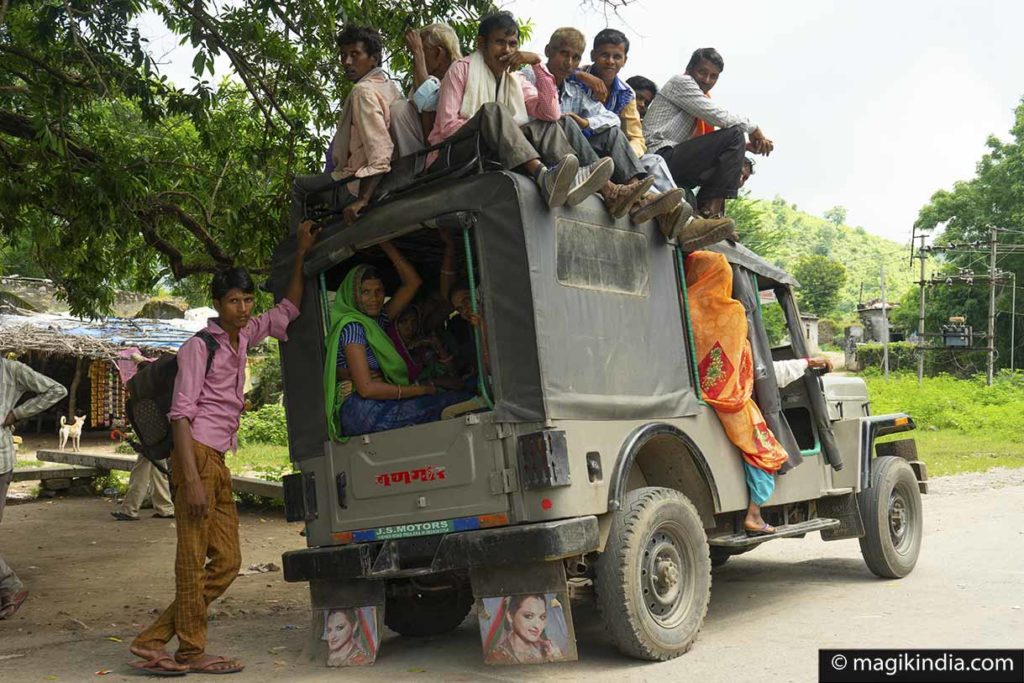
The only accommodation available in Poshina is the palace of Darbargadh (what else!) still ruled by the descendants of Rao Rai Sinh, a Rajput of the Vaghela dynasty, who conquered the region in 1634 then occupied by the Rathores. At that time, the strongholds of the Rajput Rathore clan included the Marwar region of Rajasthan and parts of Central India and Gujarat.
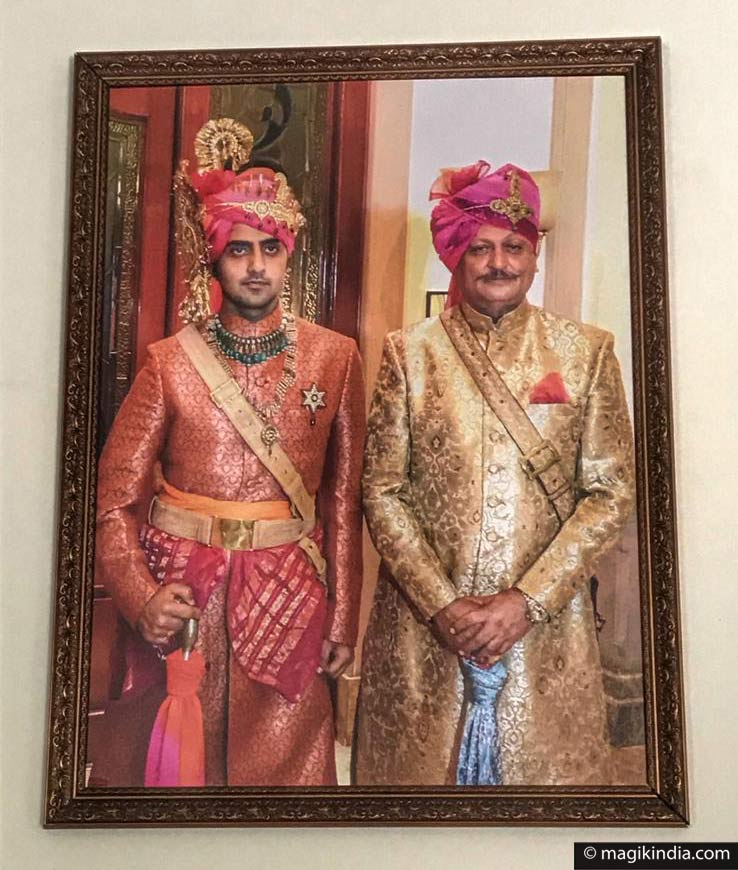
As for the Vaghela line, their leaders were first of all vassals of the great Chaulukya dynasty, although the Vaghelas are also associated with the Chaulukyas, the first known member of the Vaghela family, Dhavala, married the maternal aunt of the monarch Chaulukya Kumarapala. The Vaghelas had their hour of glory, when in the middle of the 13th century, Visaladeva Vaghela (son of Lavanaprasada, general of the Chaulukyas) ascended the throne taking advantage of the flaws in the reign of King Chaulukya Bhima II. The successors of Visaladeva Vaghela ruled a major part of Gujarat until Karna Vaghela was defeated by Alauddin Khalji of the Sultanate of Delhi in 1304 CE. The Vaghelas were the last Hindu monarchs to rule Gujarat, before the Muslim conquest of the region.
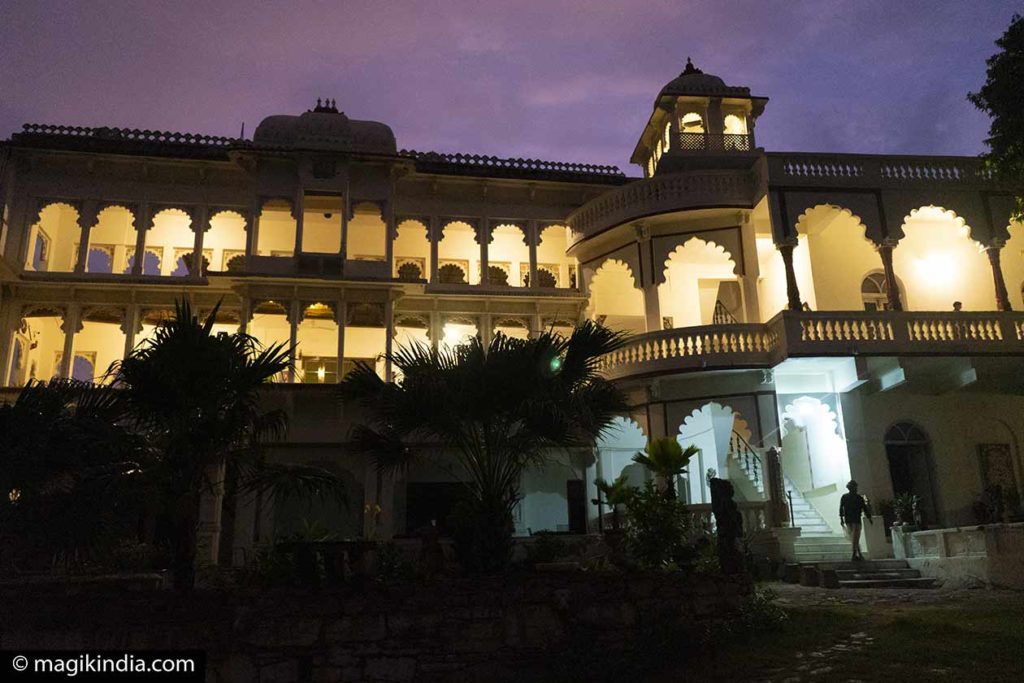
Our first steps in the palace begins with a drum roll, as when the illustrious guests came to pledge allegiance to the Maharaja. Kunwar Harendrapal Sinh, the owner, welcomes us in person and takes us for a grand tour of the property. Dressed in white, the palace with multiple colonnaded arches in Rajput style is subtly decorated with antique furniture and, a whole collection of Pichwais and Tanjore paintings, gathered by the spouse of Harendrapal Sinh, adorn the walls. Our room is a spacious one overlooking the old Zenana, the part which was reserved for the women of the court.
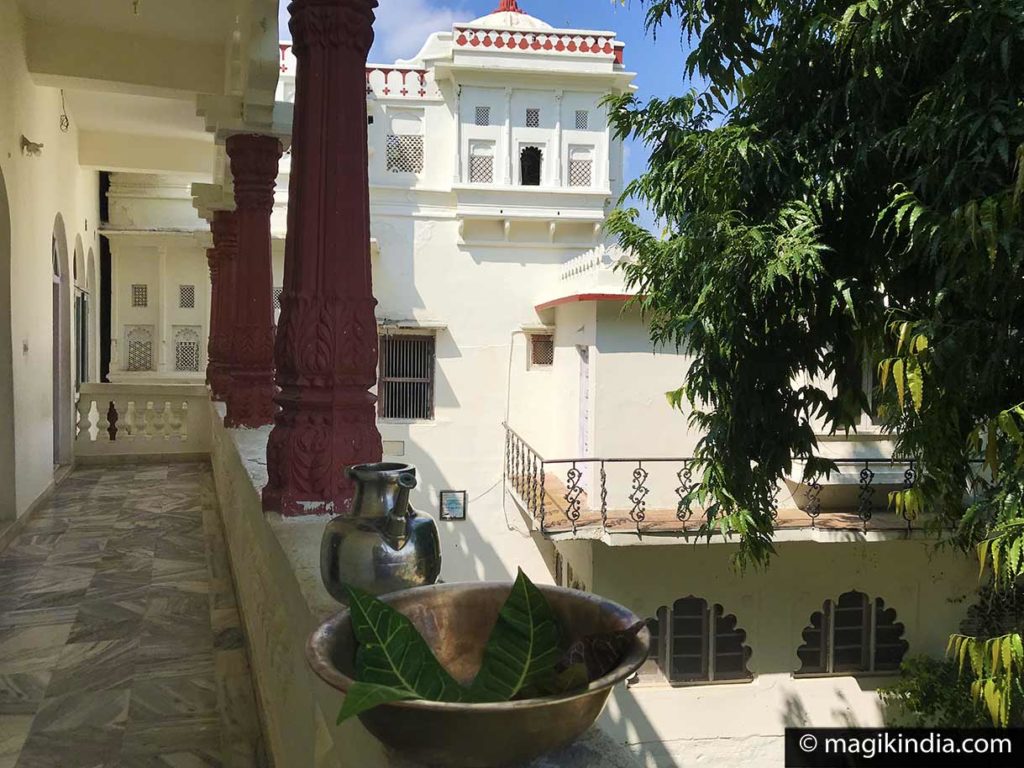
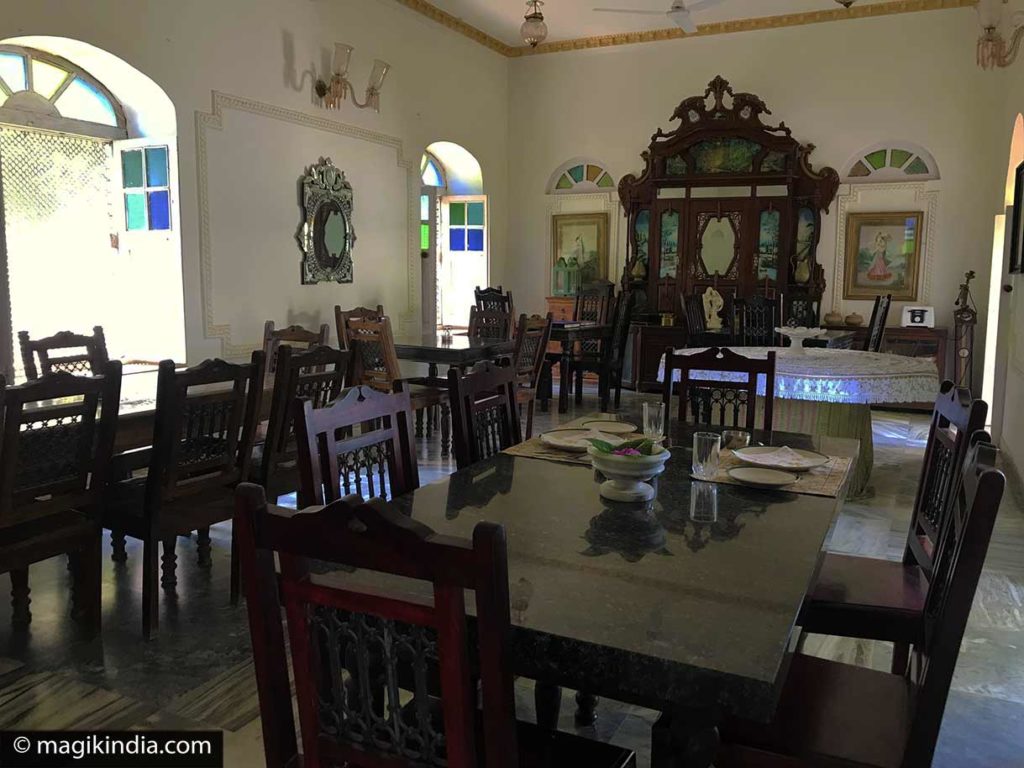
The village of Poshina surrounding the palace seems to have remained the same since ancient times. On the main central street, which starts from the palace and stretches for several hundred meters, you will meet several indigenous peoples of this region, in particular the Garasias who come to do some shopping there but also sell their products. Now is the time to capture some scenes from local life.

In this same village, several craftsmen are at work, the metal-smiths but also those who shape the clay to make the famous ‘manetar ka ghoda’, the Adivasis* horses in terracotta. *Adivasi is a generic word for the indigenous peoples of India
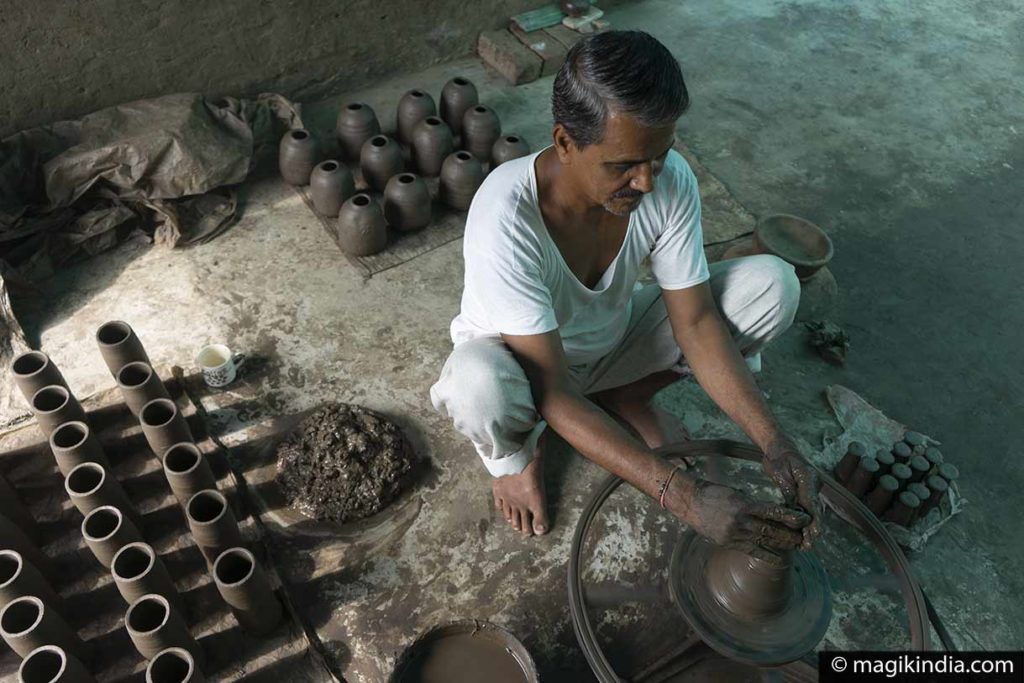
Continuing our walk in the village, we come across the 14th century CE Nilkhand Mahadev temple dedicated to Shiva. The sanctuary contains a lingam, symbol of the god, and the exterior, although worn by time, have kept beautiful sculptures of different deities of the Hindu pantheon.
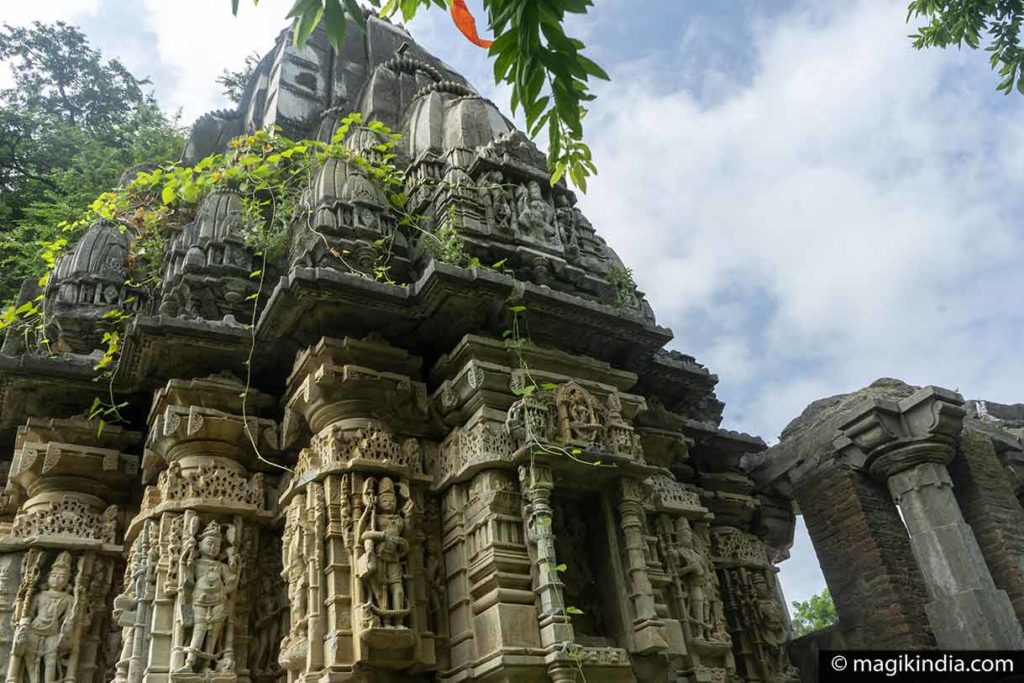
In front of the temple, the chhatris of the Vaghelas (memorials) remind us of the city’s royal past. Not far from these cenotaphs, two ancient Jain temples are built dedicated to Parshvanath and Neminath, respectively the 23rd and 22nd of the 24 tirthankaras (awakened masters) of the Jain faith. The interior is richly decorated with colored mirrors and glasses.
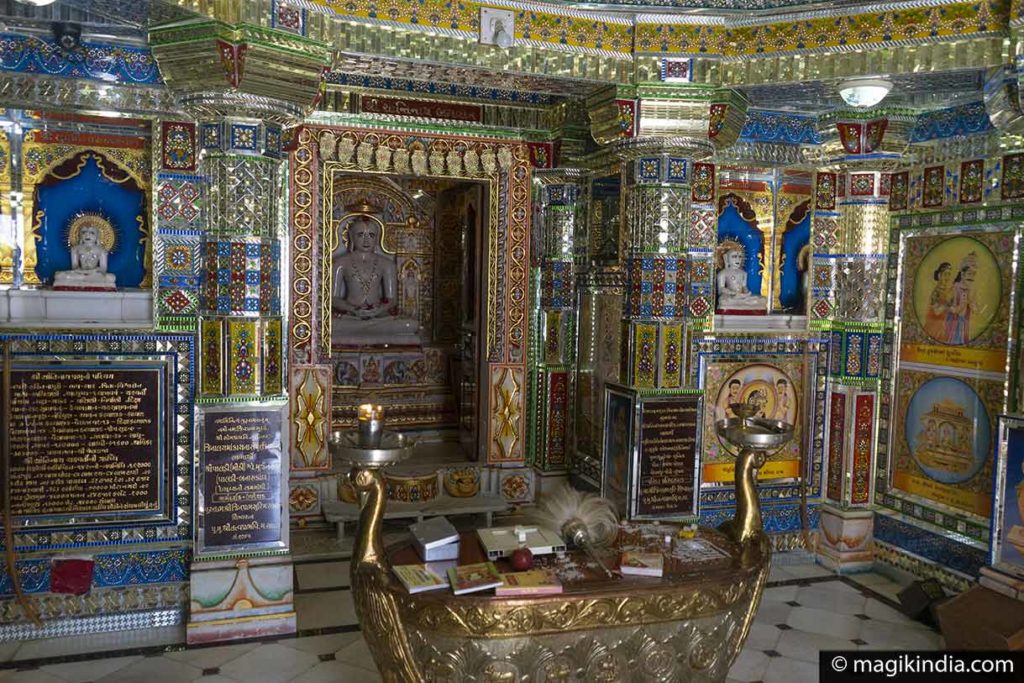
The tour of Poshina’s surroundings is done with Kunwar Harendrapal Sinh himself. Capped with a Panama hat and in a cheerful mood, he first leads us to the very special places of the terracotta horse sanctuaries.
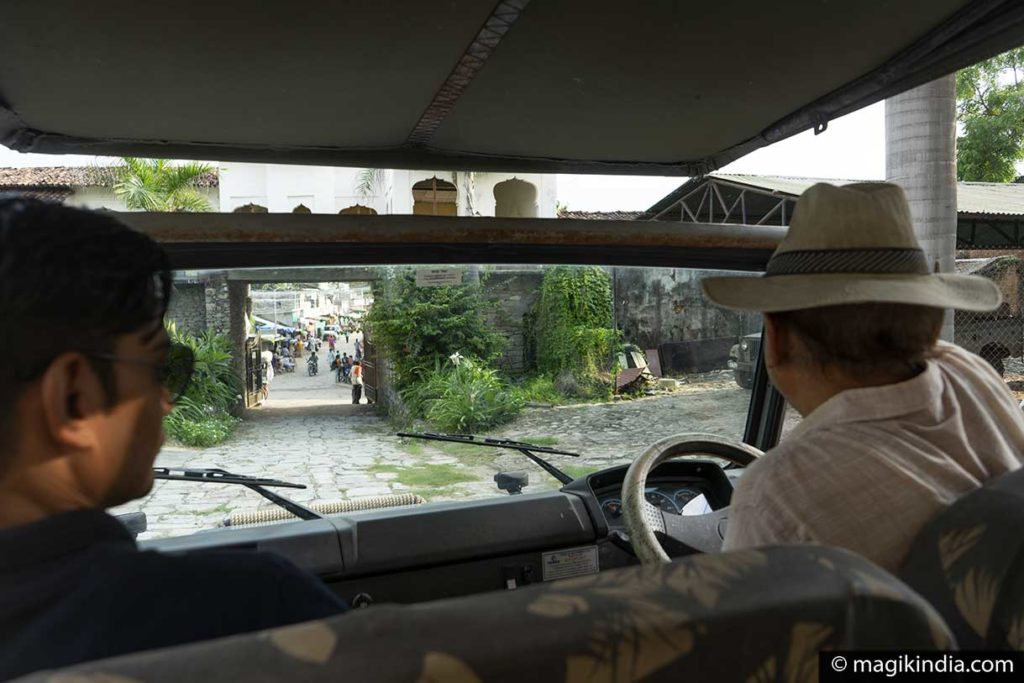
After a bridge over the Sai river, the first temple is revealed. Hundreds of horses with long, slender ears and an O-shaped mouth greet us in tight rows under a neem tree. They are dedicated to the cult of Damidohi, a local goddess. The natives come here to make a wish and, if granted, they offer a terracotta horse to the deity as a sign of gratitude. These votive figurines of horses, although much smaller, remind me of those of Ayyanar, the protective god of Tamil Nadu villages in South India.
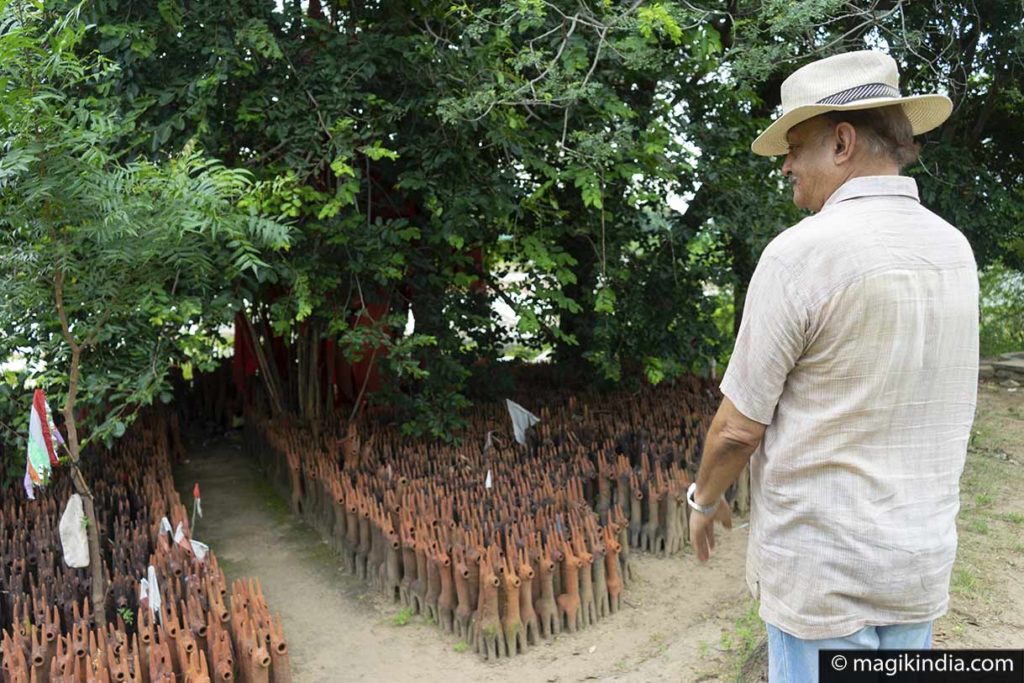
After this enriching visit, we take the road to a second sanctuary of the same kind, Bhakar Bavji, the god of the mountain. It is located in an Adivasi village, which we cross on foot, stopping from time to time to say hello to the locals. The site is just as fascinating as the first one, these enigmatic terracotta horses seem to exert a bewitching power over us.
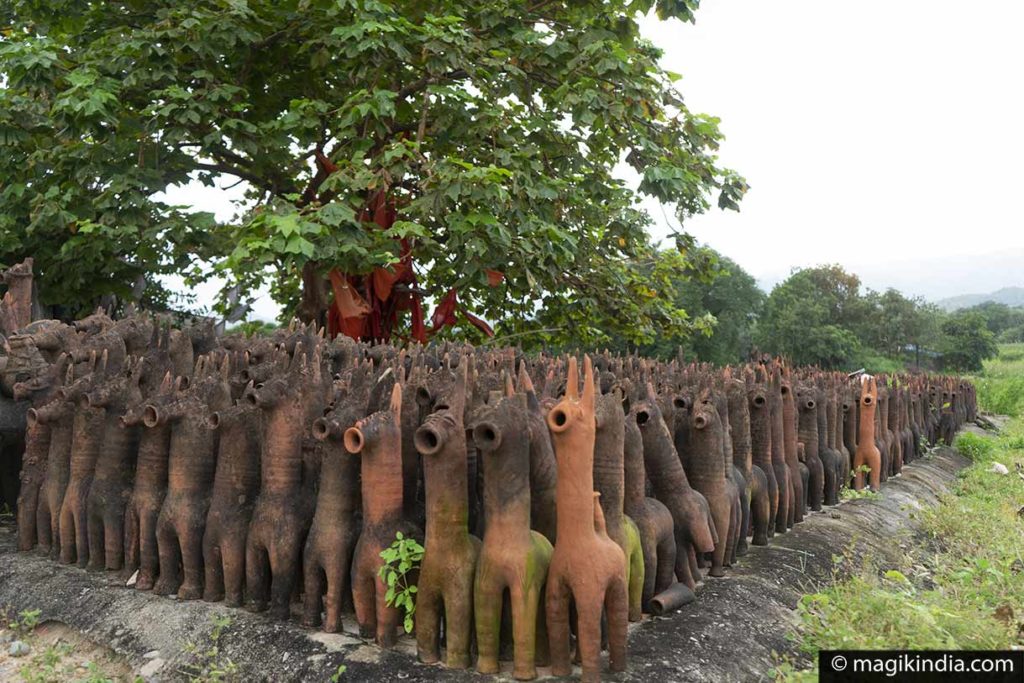
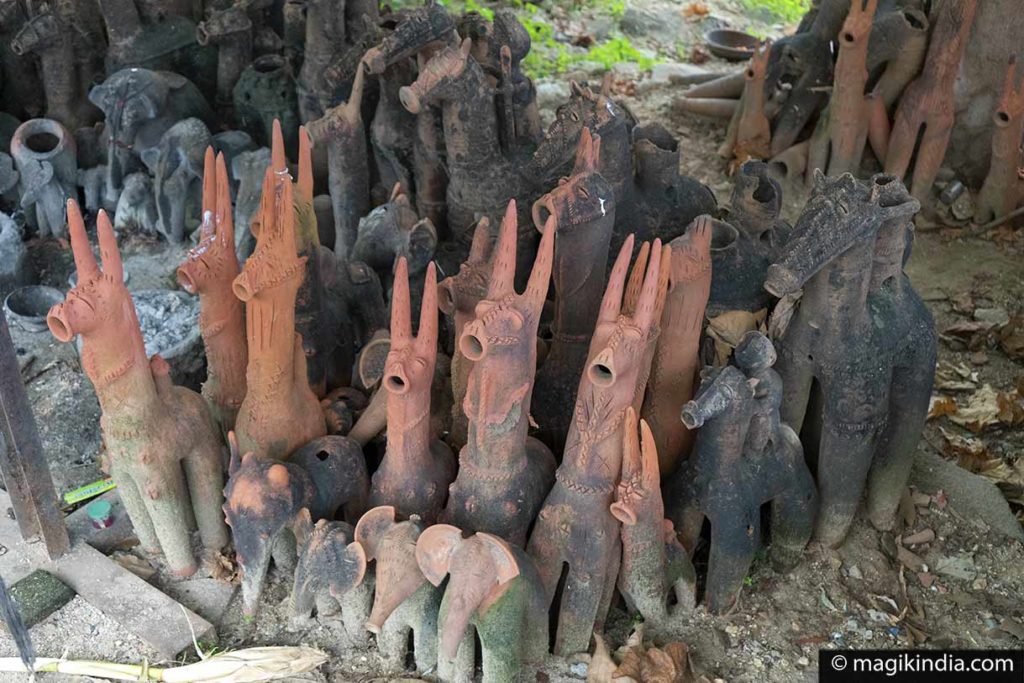
We continue our road further north. On the way, we stop for a demonstration of the manual pollination of cotton plants. Farmers prick the male inflorescences of the cotton plant on skewers and then pollinate the female flowers with these stamen. A long and patient work that is very interesting to observe.
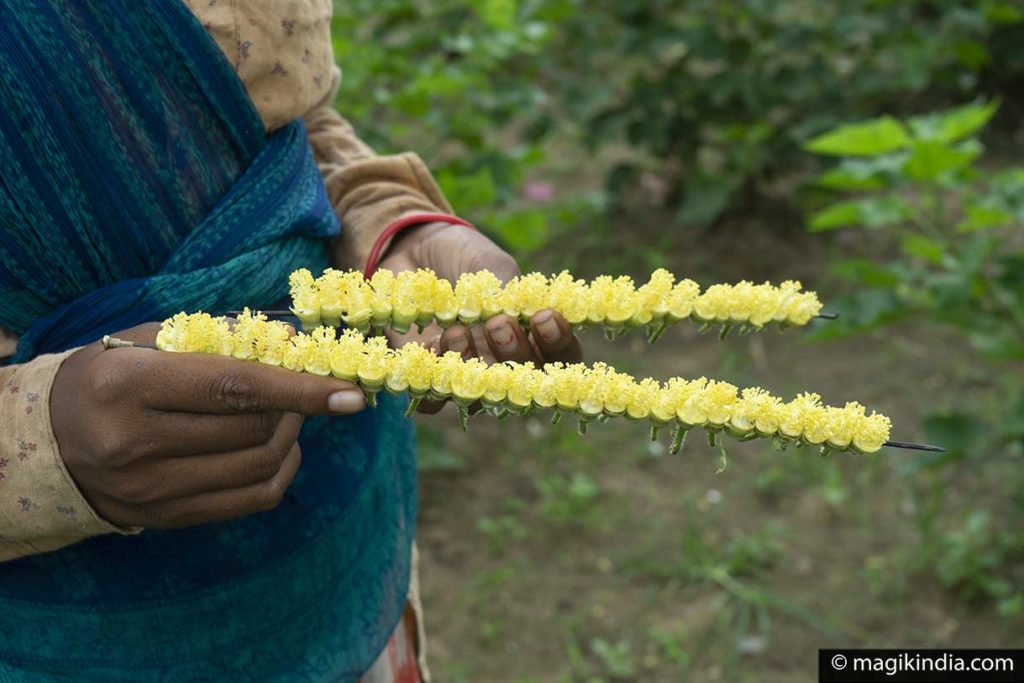
We arrive at the border of Gujarat and Rajasthan, driving through beautiful landscapes. We reach a small Rabari village where we will enjoy a delicious homemade meal.
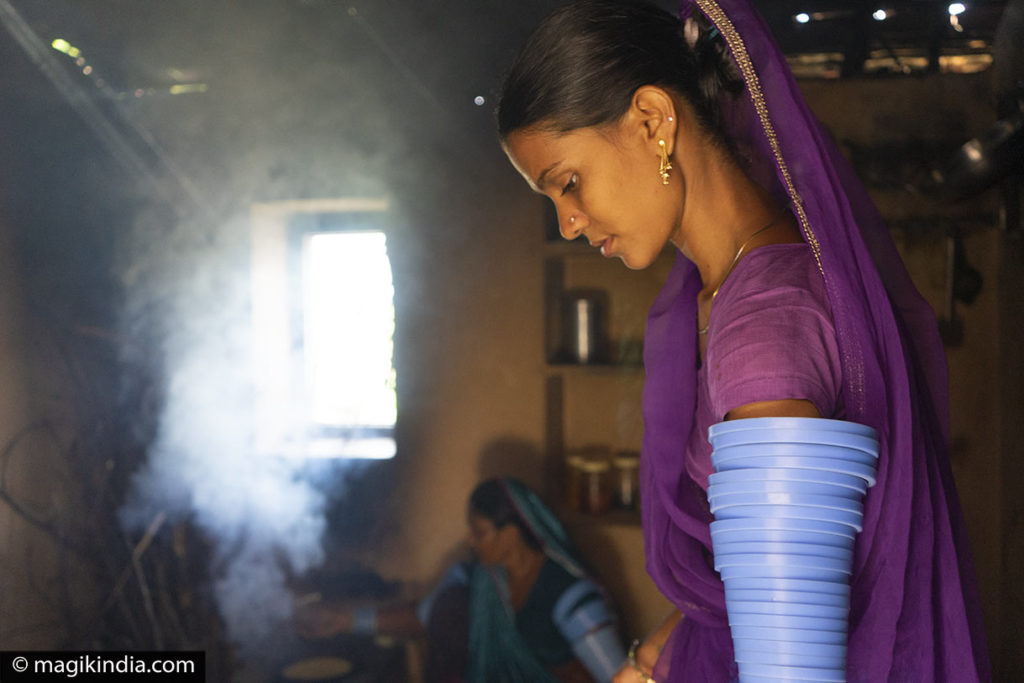
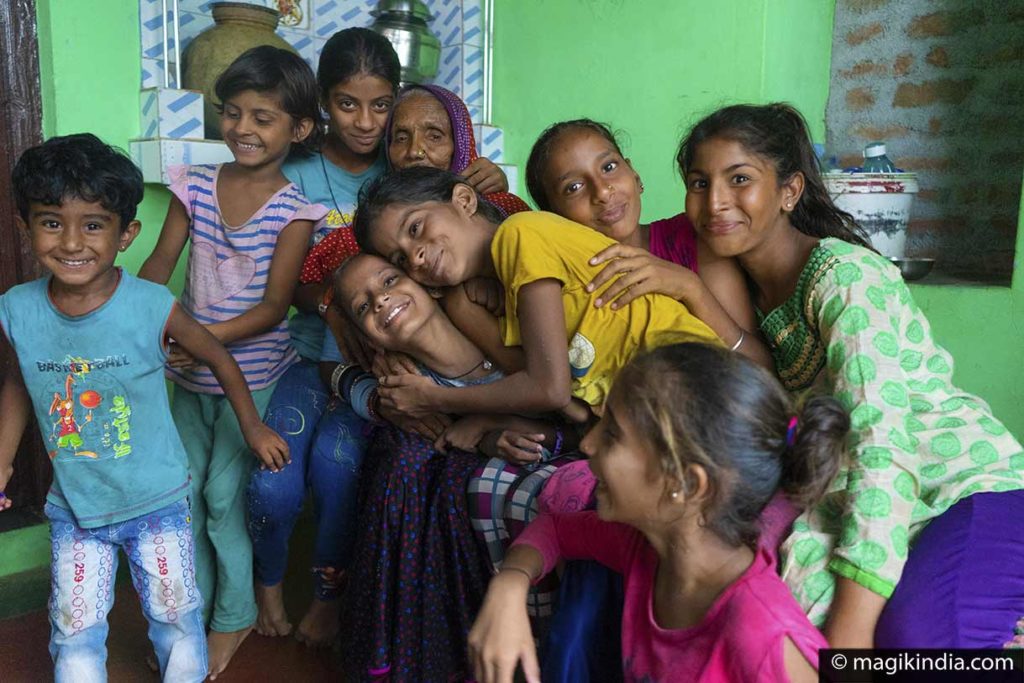
Our visit to the family home, where four generations live under the same roof, is the subject of great curiosity. Our gestures are scrutinized and the intimidated children hide in their mothers’ skirts but then approach step by step when we start a ‘Garba’, a popular dance from Gujarat. The ice is totally broken when a photo session is organised. It gives me a good opportunity to take beautiful pictures of the women of the house, still dressed in a traditional way with large sky blue wedding bracelets.
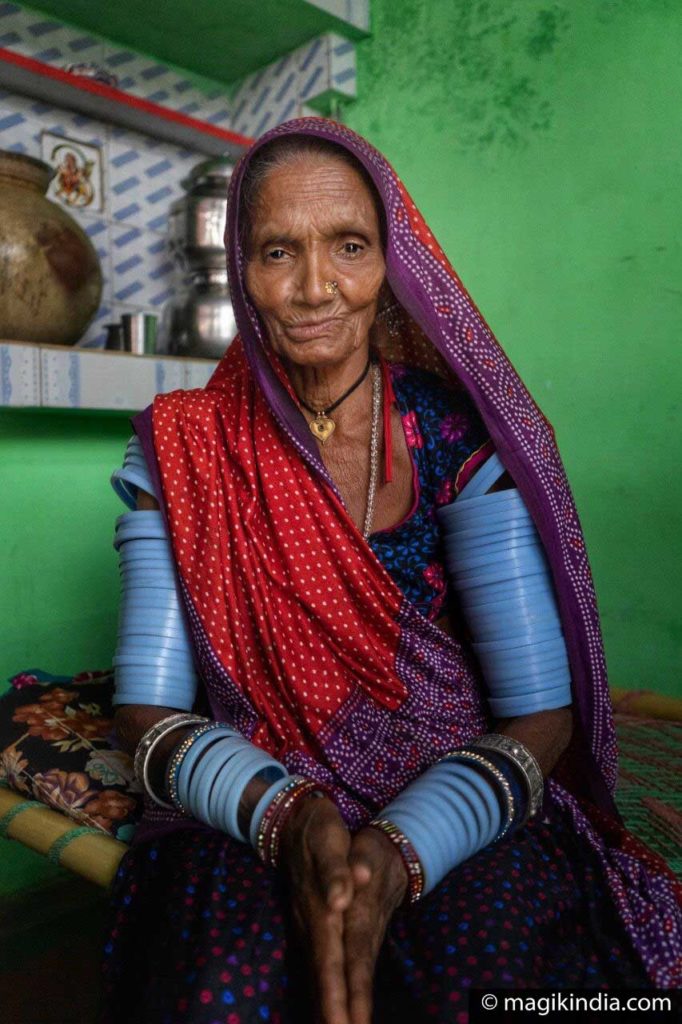
The Rabaris were originally nomadic people who bred camels, but nowadays many have settled down and have converted to sheep and goat farming. These people include two sub-clans, the Rabaris of Rajasthan, and the Rabaris of the Kutch Desert in western Gujarat. The traditional costumes and also certain traditions differ completely according to these two clans. Rabari women of Kutch generally wear black outfits embroidered with colourful patterns while Rabari women of Rajasthan have very bright costumes rather in purple, red and blue tones with a long row of wedding bracelets. Rabaris men are known for their large red turbans and their immaculate white outfits. Their natural elegance has been immortalized by a good number of international photographers.
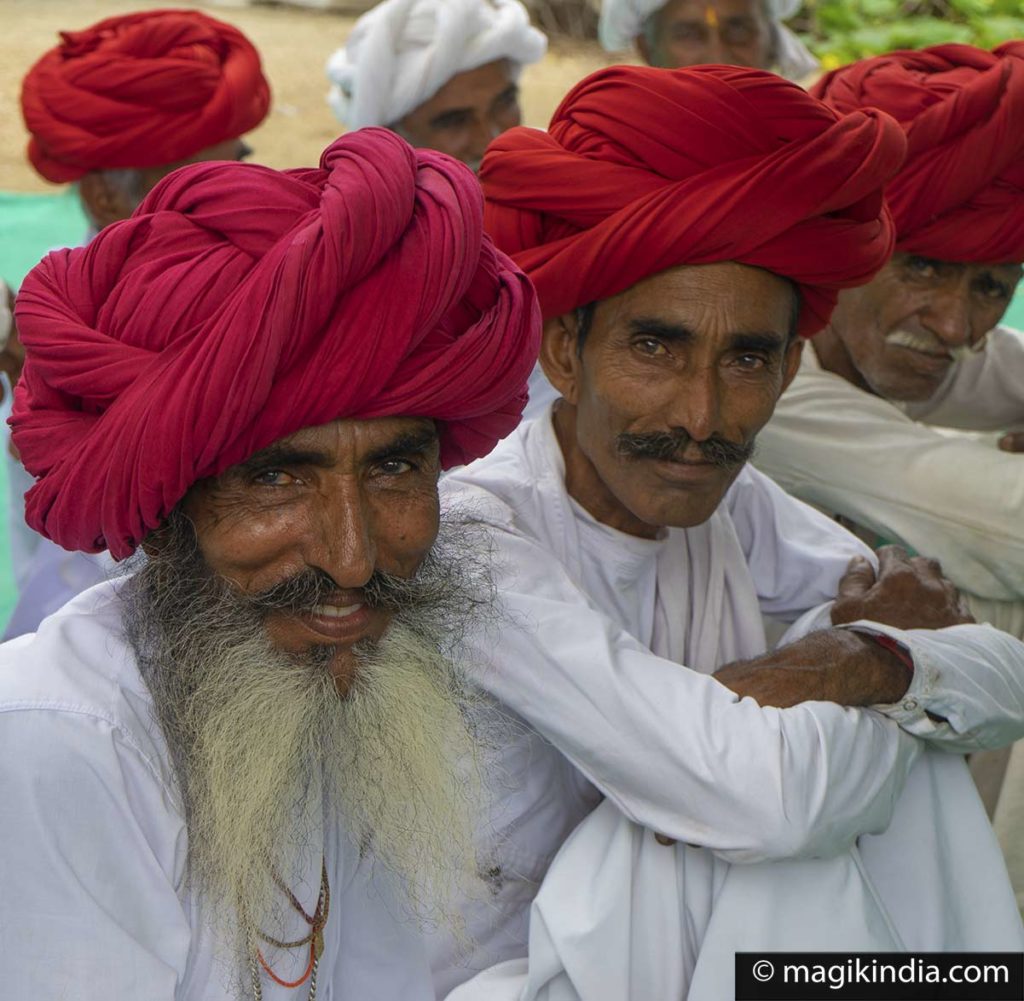
Returning towards the palace, at the end of the day, we again meet several members of the Garasia community. I jump out of the jeep to capture the last shots of this original people.
The originality of these people lies in their lifestyle. Contrary to what is practiced in the major part of India, the Garasias can be in live-in relationship before marriage. Couples generally meet at the annual Gaur fair from which they elope. When they return to their village, the boy’s family must pay a certain sum of money to the bride’s family so that the couple can live together. The official wedding ceremony takes place when the couple collects the funds necessary to get married.
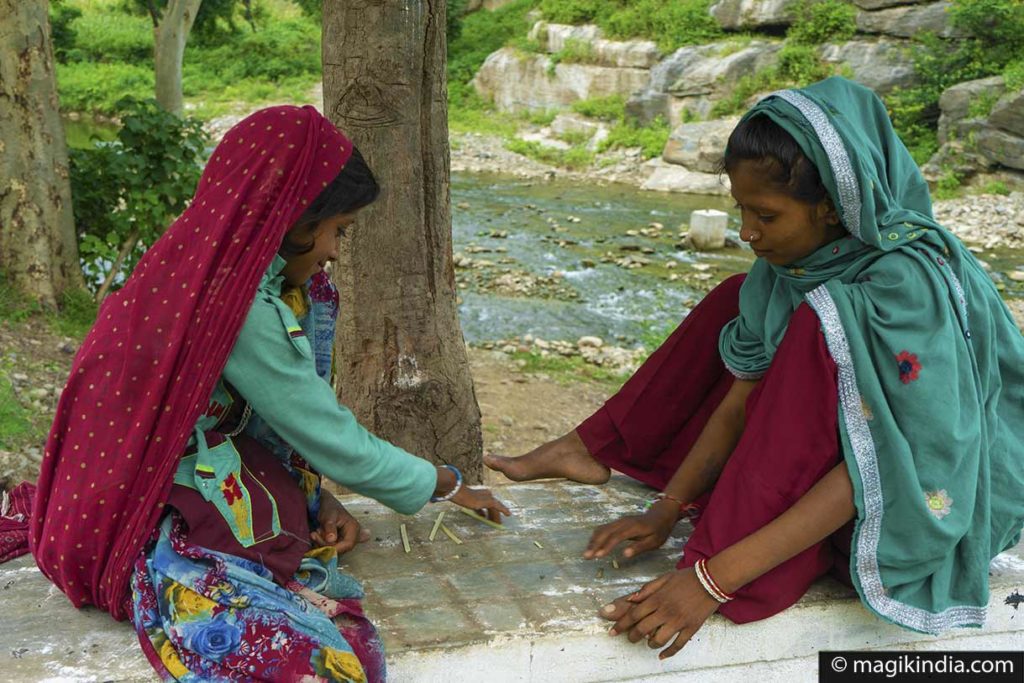
If the outfits of Garasia men are rather simple, those of women, on the other hand, does not lack inventiveness. They wear a ‘ghagra choli’ that is to say a fitted blouse with long sleeves with a skirt and a long veil stitched on the back of the head. The top is decorated with large flowers sewn on the shoulders, small round mirrors typical of Gujarat, but also embroidered messages, sometimes humorous, like ‘I love you’, the name of their partner or … rabbits! The whole costume may seem a little kitsch, but for me, it’s just the mark of their open-mindedness.
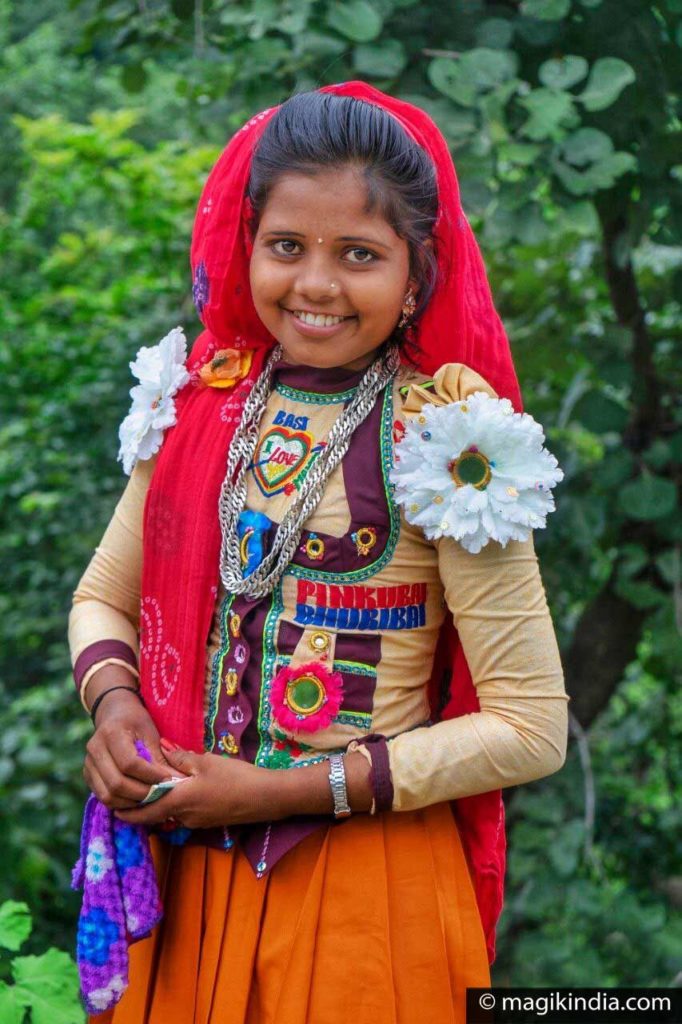
Our departure grow closer, we leave the palace and its family-like atmosphere, our eyes lit up with great memories. On the way back to Udaipur, we come across another sanctuary of clay horses in which we express the wish to return to this region as soon as possible …

Chitra Vichitra fair
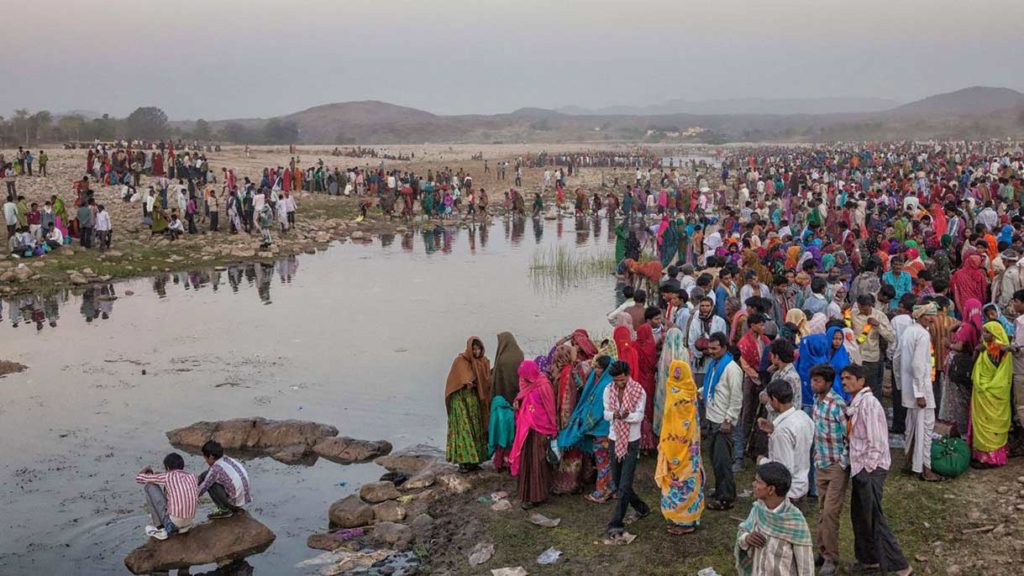
If you travel in the region around the festival of Holi (March or April according to the Hindu calendar), you may have the chance to attend the annual Chitra Vichitra fair in the village of Gunbhakari, about ten kilometres from Poshina.
The fair site is considered sacred due to the confluence of three rivers, the Sabarmati, the Wakal and the Pamri. There is also a temple housing an image of Bhishma Pitamah, figure of the epic of the Mahabharata, eighth son of King Kuru Shantanu and the river-goddess Ganga.
The festival honours those who died during the year. The day before the festival, families gather on the banks of the Wakal river, mourn their dead and immerse their ashes into the river. It is only after this night of prayer and reverence that the colourful fair can begin.
The festivities bring together nearly 80,000 faithful, mainly from the Bhil and Garasia communities of Gujarat and Rajasthan. It is the largest tribal fair after Baneshwar in Rajasthan. It includes traditional dances and songs as well as fairground attractions and various local craft stalls.
Get married in Poshina, in Darbargadh palace!
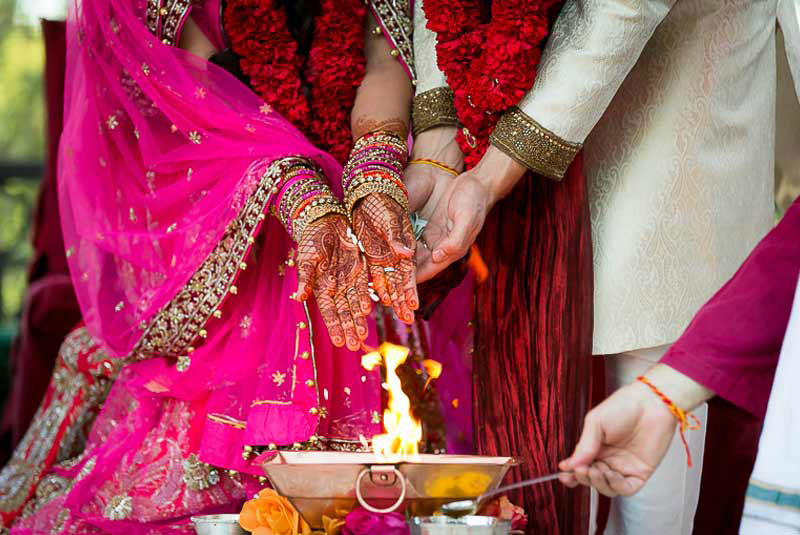
What more romantic than an Indian-style marriage in a historic palace which has seen Maharajas for ten generations! In collaboration with the sinh family, we organize everything from A to Z! Transport, decoration, buffet, Hindu ceremonies, costumes, visits … etc. Contact us!

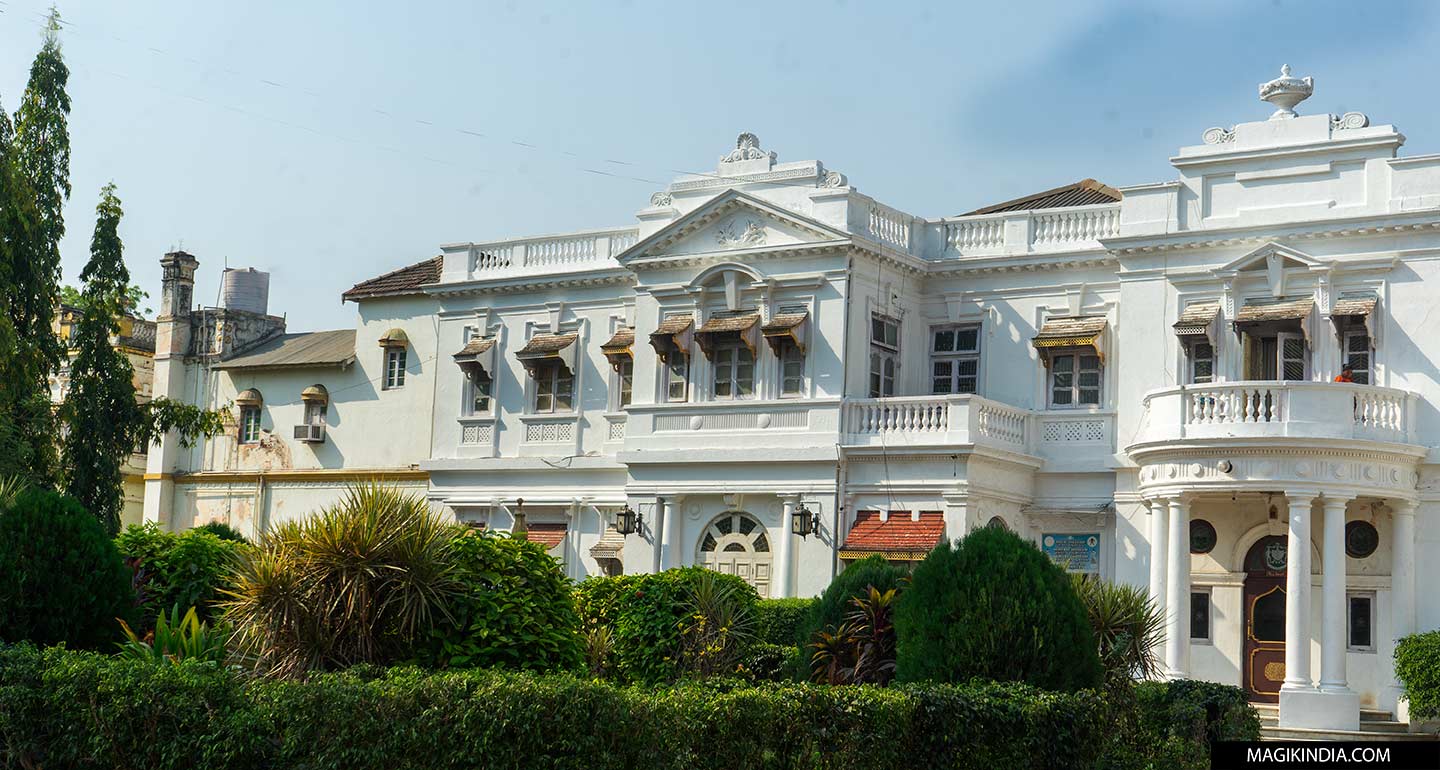

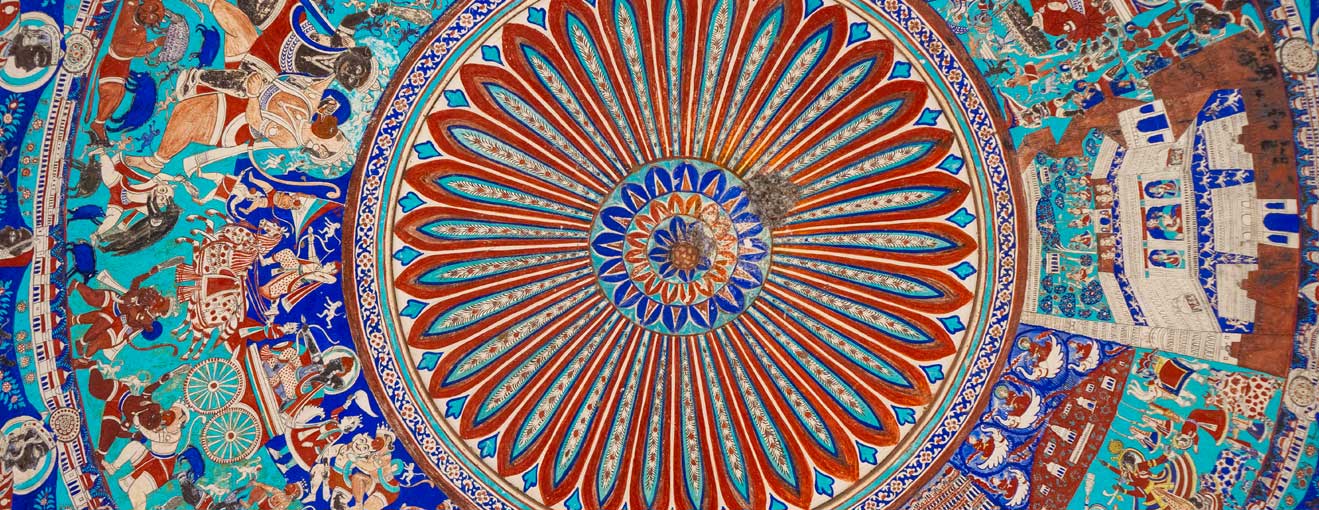

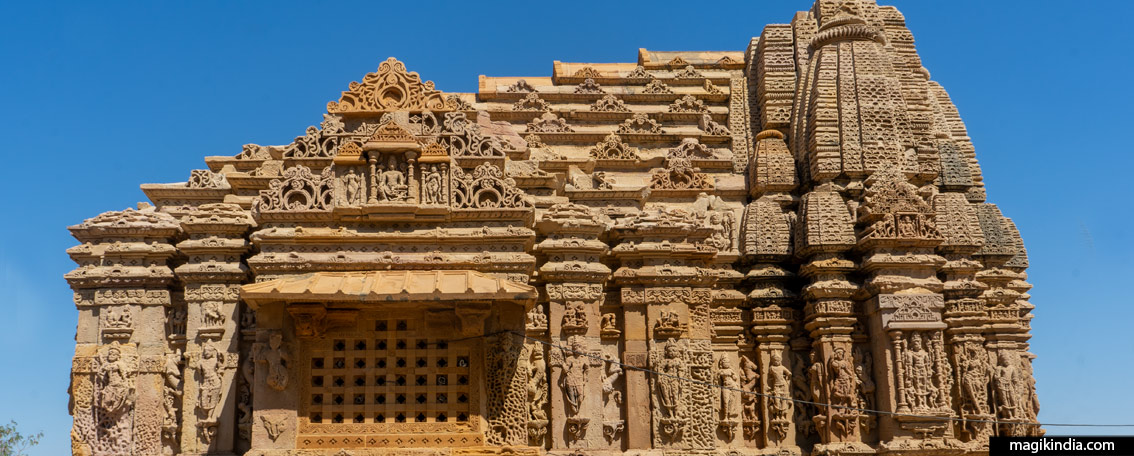

Thanks you for your blog. I spent hours reading and watching your wonderful pictures. I visited most of the places ( 15 little trips of 2 weeks in India) but I enjoy to see them again in your blog. I visited Poshina and saw 2 of the adivasi clay horses sanctuary but i missed the last one, with the colored horses. Do you remember where is it ? I imagine to come again in Gujarat…
Last february, just before the Covid crisis, I was in Tamil Nadu and spent 4 days to look after the Ayanar forest temple between Trichy and Chettinad (I saw more than 20 and think they are everywhere in this area)
India is really incredible for people interested with temples, old muslim architecture, religious places….
I take some ideas in your blog for the next trip, I hope not so far…
Thanks again
Christine ( France)
Many Thanks Christine for your kind message. Yes, India is incredible in many ways and specially for those who love the cultural side of it.
The third horse sanctuary is on the way to Udaipur, I can’t give you a precise location as it was in the middle of nowhere.
As there is only one way back, you can’t miss it next time you come back.
Bien cordialement, Mathini